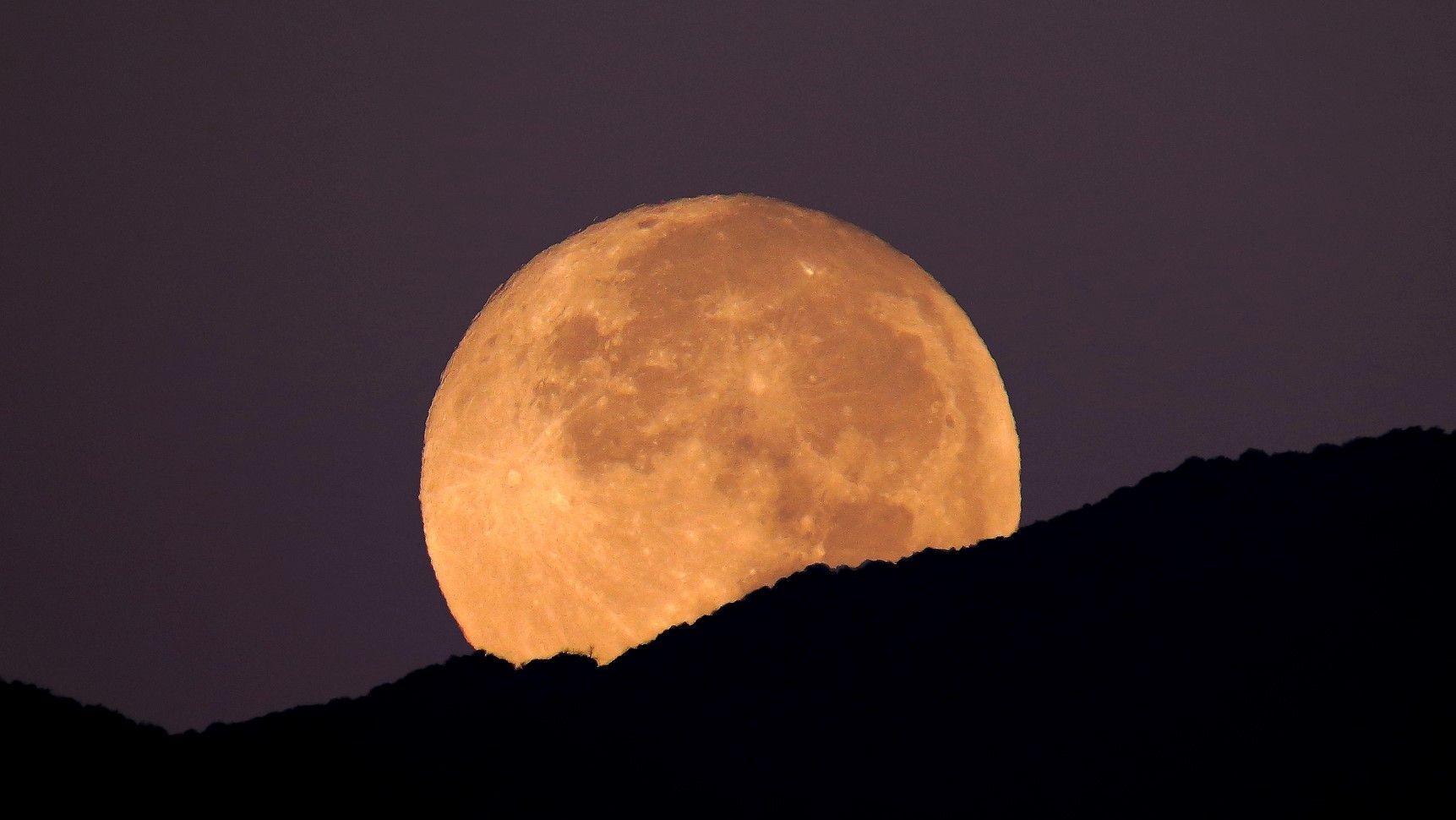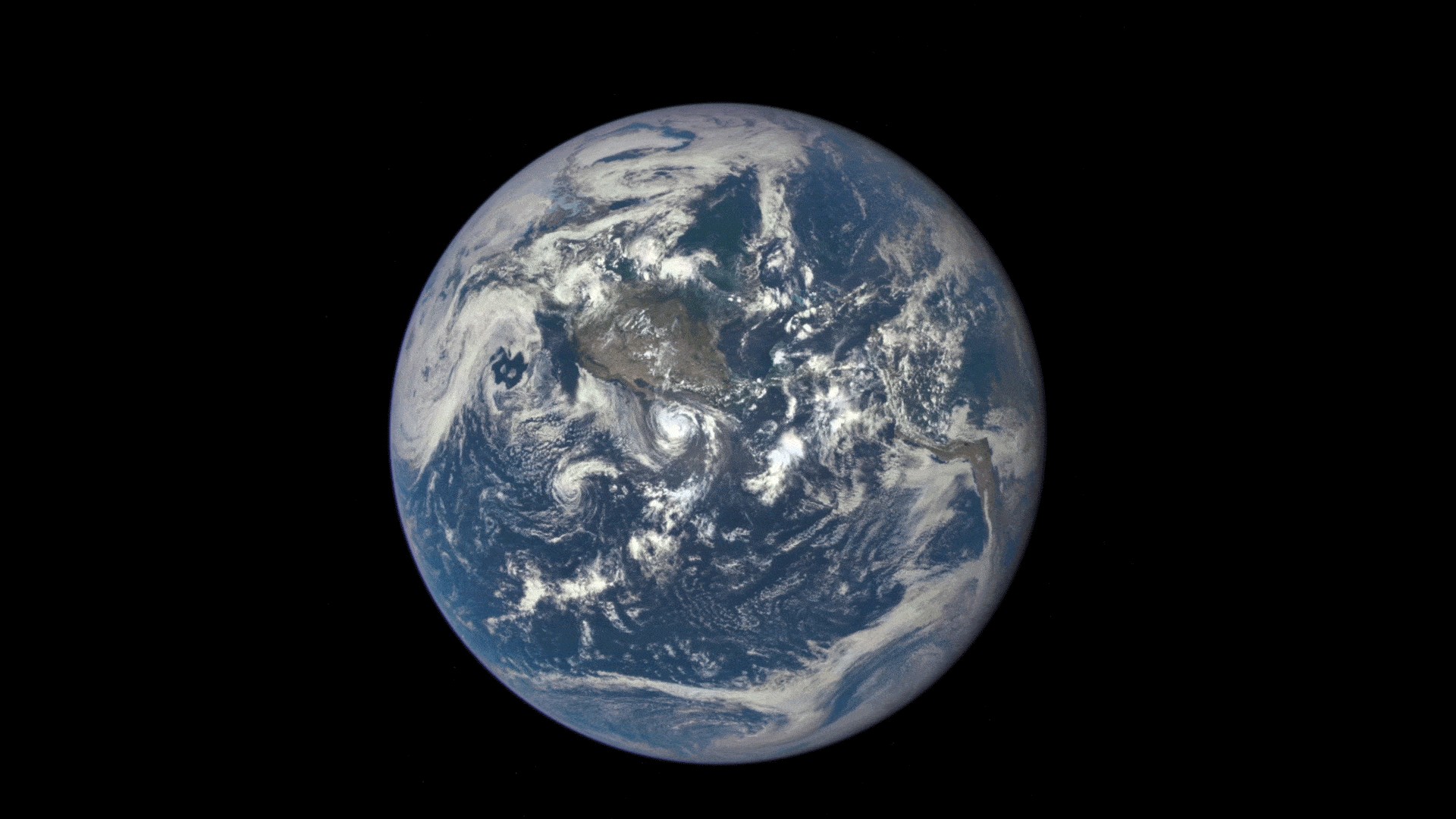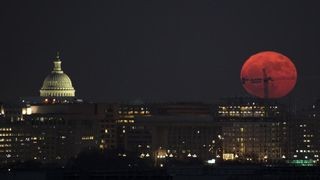How Much Mass Does The Moon Have Compared To Earth? Explore the lunar mass differential and its implications. COMPARE.EDU.VN offers an in-depth analysis. Understand the moon’s weight relative to our planet, impacting tides, and space exploration. Discover more about lunar mass, Earth’s mass, and other celestial body comparisons.
1. Introduction: Lunar Mass Relative to Earth
Understanding the relationship between Earth and its moon has captivated scientists and enthusiasts for centuries. One of the fundamental aspects of this celestial dance is the difference in mass. How much mass does the moon have compared to Earth? The answer to this question is crucial for understanding the dynamics of our solar system and the unique environment that has fostered life on our planet. At COMPARE.EDU.VN, we aim to provide detailed comparisons of celestial bodies, including the moon and Earth, offering insights into their physical properties and interactions. This includes exploring topics such as lunar size, mass ratio, and gravitational effects.
2. Basic Statistics of the Moon
Before diving into a comparison of mass, it’s essential to understand the basic statistics of the moon. The moon, Earth’s only natural satellite, is a significant presence in our night sky. Its mean radius is approximately 1,079.6 miles (1,737.5 kilometers), and its mean diameter is about 2,159.2 miles (3,475 km). These dimensions give the moon an equatorial circumference of 6,783.5 miles (10,917 km).
2.1 Key Lunar Statistics:
- Radius: 1,079.6 miles (1,737.5 km)
- Diameter: 2,159.2 miles (3,475 km)
- Surface Area: 14.6 million square miles (38 million square km)
- Mass: 7.35 x 10^22 kg
- Density: 3.34 grams per cubic centimeter (3.34 g/cm3)
Compared to Earth, the moon is about one-quarter the size of our planet. This relatively large size ratio (1:4) between Earth and its moon is unique in our solar system, influencing various phenomena such as tides and Earth’s axial stability.
3. Comparing the Moon’s Mass to Earth’s Mass
The mass of the moon is approximately 7.35 x 10^22 kg. This figure is about 1.2% of Earth’s mass, meaning Earth weighs approximately 81 times more than the moon. To put it another way, for every 81 kilograms of Earth’s mass, there is only 1 kilogram of the moon’s mass. This mass disparity has significant implications for the gravitational interactions between the two bodies.
3.1 The Moon’s Mass in Perspective
To visualize the difference in mass, imagine Earth as a nickel. In that scale, the moon would be about the size of a coffee bean, according to NASA. The moon’s surface area is about 14.6 million square miles (38 million square km), which is less than the total surface area of the continent of Asia (17.2 million square miles or 44.5 million square km).
4. Density and Gravity: Further Comparisons
In addition to mass, density and gravity are essential factors in understanding the characteristics of the moon and Earth. The moon’s density is 3.34 grams per cubic centimeter (3.34 g/cm3), which is about 60% of Earth’s density. This lower density suggests that the moon has a different composition than Earth, with a smaller iron core.
4.1 Gravitational Force Comparison
The moon’s gravitational force is only about 16.6% of Earth’s gravity. This means a person weighing 100 lbs on Earth would only weigh 16.6 lbs on the moon. The lower gravity also affects how objects behave on the moon’s surface. For example, a person who can jump 10 feet on Earth could jump almost 60 feet on the moon.
5. Implications of Mass and Gravity Differences
The differences in mass and gravity between the moon and Earth have several important implications.
5.1 Tidal Effects
One of the most noticeable effects of the moon’s gravity is the tides on Earth. The moon’s gravitational pull causes the oceans to bulge, creating high tides. Because the moon’s mass is significantly less than Earth’s, the tidal forces are not as strong as they would be if the moon were more massive.
5.2 Earth’s Axial Stability
The presence of the moon also helps stabilize Earth’s axial tilt. Without the moon, Earth’s axis would wobble more dramatically over time, leading to significant climate changes. The moon’s mass and gravitational influence keep Earth’s axis relatively stable, providing a more consistent environment for life.
5.3 Space Exploration Considerations
Understanding the moon’s mass and gravity is crucial for planning and executing lunar missions. The lower gravity makes landing and taking off from the moon easier than on Earth, but it also presents challenges such as reduced traction and different atmospheric conditions.
6. How Does Our Moon Compare to Others in the Solar System?
While our moon is significant to us, it is not the largest in the solar system. However, it is the largest moon relative to the size of its planet. Jupiter’s moon Ganymede is the largest moon overall.
6.1 Largest Moons in the Solar System
Here’s a comparison of the 10 largest moons in the solar system:
| Rank | Moon | Equatorial Radius | Parent Planet |
|---|---|---|---|
| 1 | Ganymede | 1,635 miles (2,631 km) | Jupiter |
| 2 | Titan | 1,600 miles (2,575 km) | Saturn |
| 3 | Callisto | 1,497 miles (2,410.3 km) | Jupiter |
| 4 | Io | 1,131.7 miles (1,821.6 km) | Jupiter |
| 5 | The Moon | 1,079.6 miles (1,737.5 km) | Earth |
| 6 | Europa | 969.84 miles (1,560.8 km) | Jupiter |
| 7 | Triton | 840.96 miles (1,353.4 km) | Neptune |
| 8 | Titania | 490.19 miles (788.9 km) | Uranus |
| 9 | Rhea | 474.91 miles (764.3 km) | Saturn |
| 10 | Oberon | 473.11 miles (761.4 km) | Uranus |



7. The Moon’s Gravity in Detail
The moon’s gravitational field is not uniform across its surface. In 2012, NASA’s Gravity Recovery and Interior Laboratory (GRAIL) mission mapped the moon’s gravity in unprecedented detail. This mapping revealed that the moon’s gravity varies based on its surface features, such as craters, rilles, and mountains.
7.1 GRAIL Mission Findings
The GRAIL mission provided valuable insights into the moon’s internal structure and composition. According to Maria Zuber of the Massachusetts Institute of Technology, “What this map tells us is that more than any other celestial body we know of, the moon wears its gravity on its sleeve.”
8. Lunar Phenomena: Supermoons
One of the fascinating phenomena related to the moon is the supermoon. A supermoon occurs when the moon is at its closest point to Earth during its orbit, known as perigee, and coincides with a full moon. This makes the moon appear larger and brighter in the night sky.
8.1 Understanding Supermoons
The moon’s orbit is not perfectly circular, so its distance from Earth varies. When a full moon coincides with perigee, it appears about 14 percent larger and 30 percent brighter than usual. The astronomical term for this phenomenon is perigee-syzygy.
9. Optical Illusions: The Moon Illusion
Another intriguing aspect of observing the moon is the moon illusion. This illusion makes the moon appear larger when it is near the horizon compared to when it is higher in the sky. The exact cause of this illusion is not fully understood, but several theories attempt to explain it.
9.1 Theories Behind the Moon Illusion
One theory suggests that we are used to seeing clouds at different distances, and our brains adjust the perceived size of the moon based on its position relative to these clouds. Another theory proposes that we compare the moon’s size to nearby objects on Earth, making it seem larger when it is near the horizon.
10. Moon Facts: Quick Insights
The moon is the second densest moon in the solar system, with Jupiter’s moon Io being denser. The moon’s density is 3.34 g/cm3, while Io’s density is 3.53 g/cm3. The moon is also tidally locked with Earth, meaning it always shows the same face to our planet.
10.1 Additional Resources for Moon Exploration
For more information about the moon, you can explore educational infographics by the European Space Agency (ESA). If you’re curious about how much you would weigh on the moon or other celestial bodies, the Exploratorium offers a fun interactive activity.
11. Why Study the Moon?
Studying the moon is crucial for understanding the formation and evolution of our solar system. The moon is often referred to as a “Rosetta Stone” for understanding other celestial bodies. By studying its composition, structure, and history, we can gain insights into the processes that shaped the planets and moons in our solar system.
11.1 The Moon as a Key to the Solar System
As Noah Petro, deputy project scientist for NASA’s Lunar Reconnaissance Orbiter (LRO) mission, stated, “The moon is the Rosetta Stone by which we understand the rest of the solar system.”
12. Frequently Asked Questions (FAQ) About the Moon and Earth
-
How does the moon’s mass affect Earth’s tides?
- The moon’s gravitational pull is the primary cause of Earth’s tides. The moon’s gravity causes the oceans to bulge, creating high tides.
-
What is the mass ratio between the moon and Earth?
- The moon’s mass is about 1.2% of Earth’s mass, meaning Earth weighs approximately 81 times more than the moon.
-
How does the moon’s gravity compare to Earth’s gravity?
- The moon’s gravitational force is about 16.6% of Earth’s gravity.
-
What is a supermoon?
- A supermoon occurs when the moon is closest to Earth in its orbit (perigee) and coincides with a full moon, making it appear larger and brighter.
-
What causes the moon illusion?
- The moon illusion is an optical effect that makes the moon appear larger when it is near the horizon compared to when it is higher in the sky. The exact cause is still debated, but theories include comparisons to terrestrial objects and atmospheric effects.
-
Is the moon’s gravity uniform across its surface?
- No, the moon’s gravity varies based on its surface features, such as craters, rilles, and mountains.
-
How does the moon stabilize Earth’s axial tilt?
- The moon’s gravitational influence helps keep Earth’s axis relatively stable, preventing drastic climate changes.
-
What was the GRAIL mission?
- NASA’s Gravity Recovery and Interior Laboratory (GRAIL) mission mapped the moon’s gravity in unprecedented detail, providing insights into its internal structure and composition.
-
How does the moon compare to other moons in the solar system?
- While our moon is the largest moon relative to its planet, Jupiter’s moon Ganymede is the largest overall in the solar system.
-
Why is studying the moon important?
- Studying the moon helps us understand the formation and evolution of our solar system and provides insights into the processes that shaped the planets and moons in our solar system.
13. Conclusion: The Moon’s Significance
In conclusion, the moon’s mass is significantly less than Earth’s, but its impact on our planet is profound. From influencing tides to stabilizing Earth’s axial tilt, the moon plays a crucial role in shaping our environment. Understanding the mass difference between the moon and Earth provides valuable insights into the dynamics of our solar system.
At COMPARE.EDU.VN, we strive to provide comprehensive comparisons of celestial bodies, helping you understand the intricate relationships between them. Whether you’re a student, a space enthusiast, or a professional, our platform offers the information you need to make informed decisions and expand your knowledge.
14. Discover More at COMPARE.EDU.VN
Do you want to explore more comparisons between planets, moons, and other celestial objects? Visit COMPARE.EDU.VN to find detailed analyses, data-driven insights, and expert opinions. Our platform is designed to help you compare and contrast various elements, making complex information accessible and easy to understand.
14.1 Call to Action
Ready to dive deeper into the world of comparative analysis? Explore our website, COMPARE.EDU.VN, and discover a wealth of information to satisfy your curiosity and inform your decisions. Whether you’re comparing products, services, or celestial bodies, we’ve got you covered. Visit us today at COMPARE.EDU.VN and start your journey of discovery.
Address: 333 Comparison Plaza, Choice City, CA 90210, United States
WhatsApp: +1 (626) 555-9090
Website: compare.edu.vn
